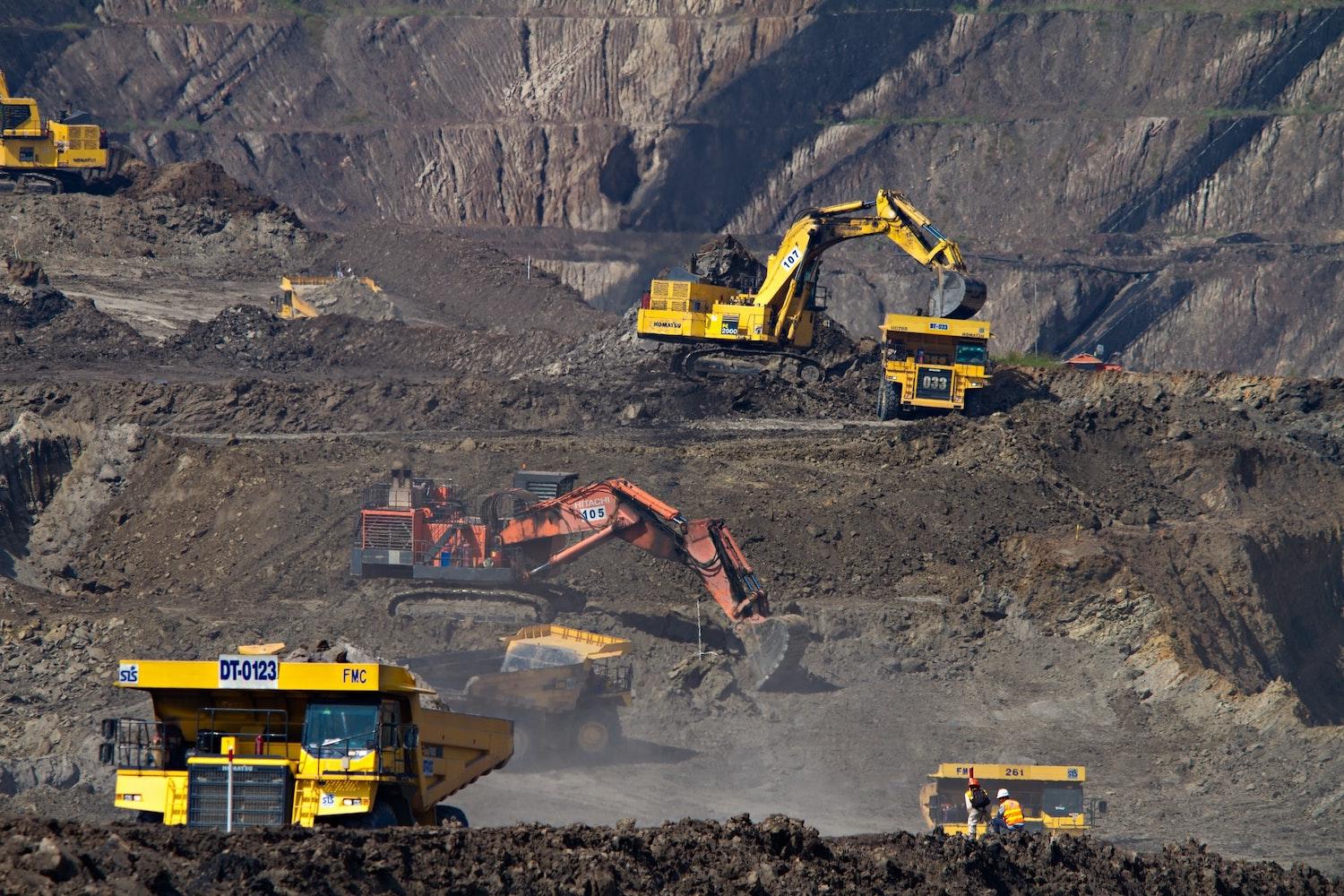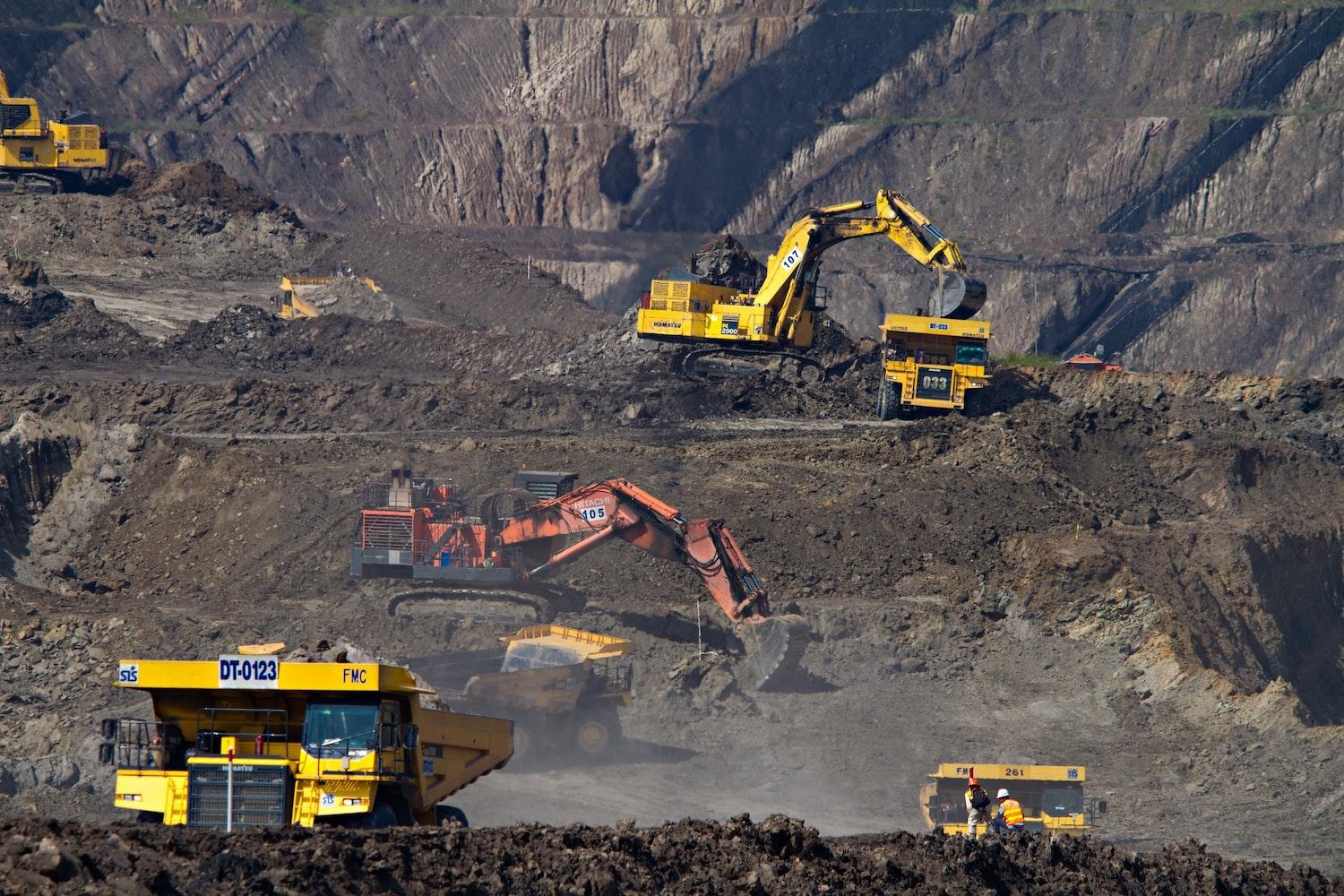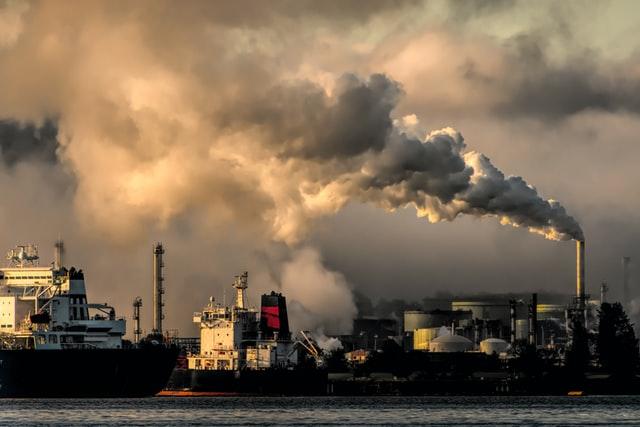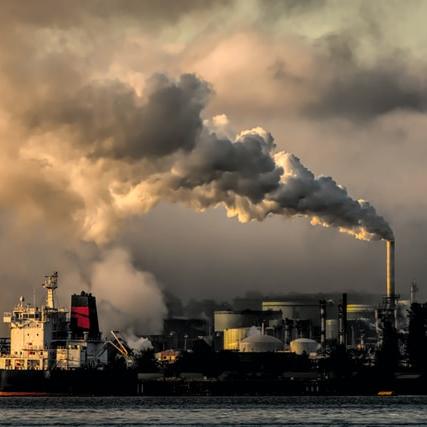What Salesforce Got Right (and Wrong) on the New Texas Abortion Law


Salesforce did the right thing last week when it recognized that the new Texas abortion law, known by its legislative name as Senate Bill 8, poses a threat to women’s reproductive health. However, Salesforce fell far short of recognizing the true potential for the law to wreak havoc within a company by exposing all employees — and clients — to the risk of a lawsuit.
What Salesforce got right about the new Texas abortion law
In an internal memo first reported last Friday by CNBC, Salesforce CEO Mark Benioff told employees that “if you have concerns about access to reproductive healthcare in your state, Salesforce will help relocate you and members of your immediate family.”
Benioff later clarified on Twitter that the state in question is Texas, but he also left a key part of the question dangling. “Ohana if you want to move we’ll help you exit TX. Your choice,” he tweeted, using a Hawaiian term of endearment meaning “family."
However, Benioff did not explicitly state that Texas is the only state in which Salesforce will aid employees seeking to relocate on account of abortion restrictions
If the memo was deliberately vague as to the state in question, Benioff got it exactly right. Reproductive rights have been under threat in many states, not just Texas.
Although the 1973 Roe v. Wade Supreme Court decision affirmed a woman’s right to abortion, there are no absolute rights under the U.S. Constitution. In practice, abortion rights are tightly restricted across virtually the entire U.S. South and are subject to other limitations in much of the Midwest.
Senate Bill 8 takes the limits on abortion restrictions a giant step further by empowering any person, even a complete stranger, to bring a $10,000 civil lawsuit against anyone who aids a woman in getting an abortion early in the pregnancy. As written, the law leaves a narrow window of just a few weeks to seek a legal abortion. That is a matter of months short of the fetal viability standard generally recognized by law.
Though the law does not expose pregnant women to the risk of a lawsuit, fear of a lawsuit effectively prevents her from seeking help in terminating the pregnancy. Under Senate Bill 8, everyone from trained medical professionals to personal confidants could be considered complicit and subject to a lawsuit with a $10,000 penalty, to be paid as bounty to the person pursuing the action in court.
In a macabre race to the bottom, lawmakers in other states with highly restrictive abortion laws have already jumped at the chance to clamp down even further by copying the Texas model if it is upheld by the U.S. Supreme Court. As of this writing the list includes Arkansas, Florida, South Dakota, Idaho, Indiana and Oklahoma.
What Salesforce got wrong about abortion rights
Though Benioff’s offer is a generous one, it does come with some serious flaws.
Firstly, Benioff fails to recognize that the law impacts everyone, not just women of childbearing age. It fosters a breakdown of trust and team-building within businesses and other organizations, because it essentially transforms everyone around a woman into potential spies and snitches, including her colleagues, clients, human resource professionals and other business contacts.
In addition, as observed by CNBC, Benioff's memo strikes a conciliatory tone on the abortion “debate,” even though the issue is a matter of firmly settled public opinion. “We recognize and respect that we all have deeply held and different perspectives,” Benioff wrote, ignoring the fact that public opinion polls have persistently favored abortion rights.
Last May, for example, the Pew Research Center published a poll on abortion with these results: “Today, a 59 percent majority of U.S. adults say abortion should be legal in all or most cases, while 39 percent think abortion should be illegal in all or most cases. These views are relatively unchanged in the past few years.”
Though Pew notes that a partisan political divide has cleaved opinions about abortion in recent years, the growing approval among Democrats has offset growing disapproval among Republicans.
“In 2007, roughly two-thirds of Democrats and Democratic leaners (63 percent) said abortion should be legal in all or most cases. Support among Democrats has risen by nearly 20 points since then, and 80 percent now say abortion should be legal in all or most cases,” Pew noted, adding that only 35 percent of Republicans and Republican leaners in the poll agreed.
By striking a conciliatory stance, Benioff ignores both general public opinion and the underlying partisan divide, providing a minority opinion with an equality of significance that it has not earned.
How much is too much for the Republican Party?
In a day and age when the discourse of the Republican Party is increasingly dominated by accused insurrectionists including former President Donald Trump, white supremacists and lethal misdirection on the COVID-19 pandemic, Benioff’s conciliatory position is weak tea indeed.
It’s no accident that restrictions on women’s access to reproductive health care and opposition to simple, effective COVID-19 prevention overlap most vigorously in states dominated by Republican office holders.
For example, Texas has been the focal point of criticism over Gov. Greg Abbott’s handling of the pandemic, second only to Florida Gov. Ron DeSantis.
Both states now rank in the top five for deaths per capita from COVID-19 over the past week, as reported by Becker’s Hospital Review on September 13, with Florida at 1.63 per 100,000 population and Texas at 0.88. The list was topped by Mississippi at 1.75 and included Louisiana at 1.07 and South Carolina at 1.02.
Of the states on record for considering a Texas-style abortion ban, Arkansas, Idaho and Oklahoma are also among the top 10 for per capita COVID-19 deaths. The entire top half of the list is almost completely dominated by states that impose tight restrictions on abortion rights.
The Texas abortion bill is part and parcel of a wider schism in the U.S., in which facts and evidence are tossed aside in favor of the consolidation of political power.
If business leaders are unhappy with the situation, they should look in the mirror. In a situation that resembles the attack on trans rights, corporate donors have put a heavy thumb on the scales by supporting office holders active in the new abortion restrictions, even as they profess to support women.
It’s high time they start putting their money where their mouths are, before it’s too late.
Image credit: Clark Van Der Beken/Unsplash
Impossible Chicken Nuggets Are Here! And Other Plant-Based Food Rollouts You May Have Missed


As we gear up for Climate Week and look ahead to the COP26 climate talks later this fall, ways to reduce greenhouse gas emissions and avoid the worst of the climate crisis are top of mind. And with a major new study revealing that meat accounts for nearly 60 percent of all greenhouse gas emissions from food production, emitting 28 times more than growing plants, choosing more plant-based foods is one major way that anyone can get involved in cutting global emissions down to size.
Fortunately more than 800 companies and brands now specialize in plant-based foods, and they're introducing a host of creative concoctions that can suit any taste. Here are a few recent rollouts you may have missed, including the much-anticipated new launch from Impossible Foods.
Impossible Chicken Nuggets roll out at restaurants, will hit retailers later this month
Impossible Foods' latest offering, Impossible Chicken Nuggets, rolled out at a selection of fast-casual and upscale dining locations across the U.S. this month, including David Chang’s fried chicken concept Fuku in New York City, Marcus Samuelsson’s comfort food eatery Red Rooster in Harlem and Miami, and fast-food chain Fatburger in California.
Impossible claims that 7 out of 10 consumers preferred its plant-based chicken nuggets to the real thing in a blind taste test. “We are tremendously excited about our Impossible Nuggets. But this launch isn’t really about nuggets. It’s about the historic inflection point we’ve reached. For the first time, consumers unquestionably prefer meat made from plants instead of meat from an iconic animal,” Pat Brown, founder and CEO of Impossible Foods, said in a statement. “In the battle for the future of food, this is the first time David has categorically bested Goliath, but it won’t be the last.”
Those are pretty big words, but Impossible is betting big that the next "chicken war" will be plant-based. The Impossible Nuggets will roll out to major retailers including Walmart, Kroger, Albertsons, Safeway and ShopRite later this month, and Impossible expects them to be available at more than 10,000 grocery stores by the end of the year. The news comes after a nationwide retail rollout of the company's Impossible Sausage product in August.
McDonald's debuts long-awaited vegan McPlant burger in the U.K.
The fast-food giant plans to launch its much anticipated plant-based burger in the U.K. later this month. The McPlant will first debut at 10 restaurants in the central English city of Coventry and will be on the menu at 250 U.K. locations by the end of October before rolling out to every U.K. restaurant early next year.
Notable for the fast-food industry, the McPlant is entirely vegan — featuring a plant-based patty co-developed with Beyond Meat, a vegan cheese substitute made with pea protein, and vegan versions of McDonald's classic sesame bun and special sauce. The fast-food giant also says the Beyond Meat patty will be cooked on a dedicated vegan-only grill.
McDonald's has yet to release a timeline for introducing the McPlant or another plant-based offering in the U.S., but it's safe to say it may be a while before it pops up on U.S. menus.
Hershey tests vegan chocolate bars at U.S. retailers
This month Hershey introduced a pair of new vegan chocolate bars made from oat milk. With two introductory flavors, almond with sea salt and classic dark chocolate, Hershey's new Oat Made line will be available in select U.S. retailers including Target through next summer. The company says it will track how the new products perform as it considers whether to add them to its permanent portfolio.
The new launch is part of Hershey's push to develop healthier products that include less sugar and more plant-based alternatives.
Jermaine Dupri launches a line of vegan ice cream
Music producer and rapper Jermaine Dupri is getting into the plant-based ice cream game. The longtime vegan announced his line of dairy-free frozen deserts last month, which he plans to start rolling out at U.S. restaurants in October in a strategy modeled after the rise of Impossible Foods, which launched in restaurants before expanding production enough to serve major retailers.
"We are going to launch it like Impossible did, so just available in restaurants first. Then people can find it and eat it at home," Dupri told The Beet, an online publication covering the plant-based foods sector where he serves as a creative advisor.
There's no firm word yet on where the brand, appropriately dubbed JD's Vegan, will appear first, but Dupri mentioned Nic’s on Beverly and Crossroads Kitchen, two popular vegan eateries in Los Angeles, in his interview with The Beet. The line includes six flavors made in small batches in New Jersey, using coconut milk as a base.
New plant-based foods may soon be coming to KFC's menu
Impossible Foods may soon have a new competitor in the brewing plant-based chicken war, as the president of KFC's operations in the U.S. hinted that new plant-based offerings are coming soon. In a recent interview with Bloomberg, President of KFC in the U.S. Kevin Hochman said the fast-food giant is working on a plant-based alternative to its trademark fried chicken and plans to incorporate more plant-based foods into the company’s nationwide menu in the near future.
Image courtesy of Impossible Foods
We Really Need to Keep Fossil Fuels in the Ground to Avoid the Worst of Climate Change, Scientists Say


The alarm bells from scientists about the climate crisis are rising from a steady drumbeat to a deafening crescendo. Last month the Intergovernmental Panel on Climate Change (IPCC) released its first major report in nearly a decade, warning the climate crisis is already causing “widespread and rapid changes" and that human activity — specifically carbon emissions from the burning of fossil fuels — is “unequivocally” to blame. We’re essentially locked into at least 1.5 degrees Celsius of warming, the IPCC warned, but we still have a chance to cap global temperature rise at 1.5 or 2 degrees — avoiding the worst impacts of the climate crisis — if we employ immediate, decisive interventions to reduce emissions.
For national governments, those interventions must center around embracing low-carbon energy and leaving the vast majority of fossil fuels in the ground, according to another report published in the journal Nature last week.
We need to keep the vast majority of the world's fossil fuels in the ground, researchers warn
Countries must leave 90 percent of the world's coal reserves and 60 percent of its oil and gas reserves in the ground to have even a 50 percent chance of capping global temperature rise to 1.5 degrees Celsius, according to the peer-reviewed study from the University College London.
The researchers estimate that oil and gas production must decline globally by 3 percent each year until 2050 in order for us to reach that 50-50 shot at avoiding the worst impacts of the climate crisis. "This implies that most regions must reach peak production now or during the next decade, rendering many operational and planned fossil fuel projects unviable," the study reads.
The researchers note some positive indicators: Global coal production peaked in 2013, and oil is estimated to have peaked in 2019 or be nearing peak demand. But fossil fuels still account for more than 80 percent of the global energy mix, a figure that must "decline rapidly" in order to mitigate global temperature rise.
"Dramatic cuts in fossil fuel production are required immediately in order to move towards limiting global heating to 1.5 degrees," Dan Welsby, lead author of the report, said at a news conference last week, as quoted by CNN. "But the current and indicated fossil fuel production trajectories globally are moving us in the wrong direction."
Producers should be wary of stranded assets
Accelerating the shift away from fossil-based energy "will mean that large amounts of fossil fuel reserves, prospects that are seen today as economic, will never be extracted," the researchers warn. "This has important implications for producers who may be banking on monetizing those reserves in the future, and current and prospective investors. Investments made today in fossil fuel energy therefore risk being stranded."
Estimates published last year indicate that a third of the current value of big oil and gas companies — around $900 billion— would turn to dust if governments get serious about capping global temperature rise at 1.5 degrees. Even in a 2-degree scenario, about half of these companies' assets are at risk of being stranded.
"The takeaway in this study really addresses the elephant in the room," Maisa Rojas Corradi, coordinating lead author of the IPCC report, told CNN about the University College research. "We have known since we've signed up for the Paris Agreement in 2015, that this means we have to stop burning fossil fuels by mid century. For six years, we have known the logical consequence is that there are loads of fossil fuels that would not be able to extract. It's really good that the paper shows so clearly what, in very practical terms, this really means."
The University College findings echo a May report from the International Energy Agency, which declared "there is no need for investment in new fossil fuel supply."
TriplePundit will be tracking topics like this during Climate Week next week and in the lead-up to COP26 in Glasgow. Sign up for our daily newsletter to get the latest directly in your inbox.
Image credit: Dominik Vanyi/Unsplash
Yes, 40 Percent Solar Energy for the U.S Grid by 2035 is Doable


The Joe Biden administration made waves earlier this week when it indicated that solar energy could cover 40 percent of the nation’s electric power grid by 2035. It is easy to meet news like that with disbelief, considering the minuscule toehold currently enjoyed by solar energy. However, a significant new factor is now in play. The catastrophic impacts of climate change hit the U.S. with full force this year, providing corporate leaders with a powerful incentive to lobby for a swift, aggressive transition to clean power. Settling for incremental change is not an option when floods, fires, habitat destruction, and water scarcity destroy communities and disrupt business.
What the U.S. Department of Energy really said about 40 percent solar energy by 2035
The 40 percent solar energy goalpost comes from the U.S. Department of Energy’s new Solar Futures Study, prepared by the National Renewable Energy Laboratory (NREL) in support of President Biden’s ambitious decarbonization goals.
Shortly after taking office, the president announced the goal of a carbon pollution-free power sector by 2035 and a “net zero emissions economy” by 2050.
That’s a heavy lift for renewable energy in general and solar energy in particular. Despite a skyrocketing rush of activity in recent years, solar currently accounts for just 3 percent of the U.S. electricity grid.
The Solar Futures Study does not actually make the case that the U.S. solar energy industry is currently on a trajectory to achieve the 40 percent milestone. Rather, NREL outlines the factors that would enable solar energy to account for a 40 percent share of the grid by 2035, with the remainder taken up by other carbon-free resources.
The solar energy model described by NREL anticipates that some of the tools for rapid expansion are already in hand. That includes new grid management and forecasting equipment, advanced energy storage technology, and next-generation solar hardware including new inverters as well as more efficient, less costly solar cells.
The Solar Futures Study also recognizes that the 40 percent goal is unreachable without the support of policies aimed at raising the cost of carbon emissions and lowering the cost of clean power.
NREL also anticipates the need for new power lines, and that could be a major stumbling block. For example, opposition to new interstate transmission lines has been holding back wind development in some states for many years. On the brighter side, new intrastate solar transmission proposals are beginning to emerge in parts of the U.S., indicating a pathway for solar projects to move forward in at least some cases.
Gearing up for the 40 percent solar workforce of 2035
Assembling a trained solar workforce may turn out to be a bigger obstacle than technology or transmission lines. NREL’s solar energy model anticipates that 500,000 to 1.5 million people will need to be employed in the U.S. solar industry nationwide by 2035 in order to reach the 40 percent grid penetration mark. The low end of that scale is more than double the current solar employment figure of 230,000 as of 2020.
There are already some encouraging signs that the U.S. solar energy industry is prepared to ratchet up its workforce. One example is the industry’s head start on recruiting solar workers through the Solar Ready Vets network, a Barack Obama-era initiative that continued to grow throug the Donald Trump administration.
Solar Ready Vets partners the Energy Department with the nonprofit Solar Foundation, which recently merged with the clean energy organization IREC. The program is designed to encourage veterans to apply their skillsets to solar jobs. In 2018 the program expanded to include solar training opportunities for active duty military personnel, too.
The waning years of the U.S. fossil energy industry could also provide a rich pool of recruits for the solar industry. Earlier this year, the United Mine Workers of America took a step in that direction by pressing the case for including displaced coal workers in the clean energy transition, in addition to preserving coal jobs.
Automation and other technology advances may also help trim the need for power plant workers. That trend is already apparent in the natural gas industry, where the utility company DTE anticipates that just 35 employees will be needed to run a proposed 1.1 gigawatt gas power plant in Michigan.
In that regard, the solar industry already appears to have an advantage. One example recently pointed out by Forbes is a new 1.3 gigawatt solar energy plant in Texas. After the 600-strong construction workforce finishes up, just 12 full-time employees will be needed to run the site.
Storm clouds on the solar energy horizon … or not
Last week the financial consulting firm Morningstar provided another perspective on the prospects for rapid decarbonization across all energy sectors in a new report titled, “Can the U.S. Reach Net-Zero Emissions?”
The short answer is not any time soon. Morningstar cites a list of constraints on renewable energy development in the U.S., including “financing, manufacturing, and developing the number of wind and solar projects” among other issues.
In terms of electricity generation, though, the Morningstar report does offer a glimmer of hope. As noted by Morningstar, the U.S. has already made notable progress on decarbonization, and it is one of just three high-emission nations to significantly cut carbon emissions while increasing GDP on a per-capita basis over the past 20 years. Identifying the factors leading to that achievement could help lay the groundwork for future acceleration.
One of those factors appears to be the nation’s network of public and private utilities.
“Utilities, which link energy producers and consumers, will play a leading role in cutting energy sector greenhouse gas emissions, which are 80 percent of U.S. economywide greenhouse gases,” the Morningstar report reads. “Utilities have already helped the energy sector cut emissions by 26 percent since 2005 by increasing renewable energy, using more natural gas, and retiring coal plants.”
Though Morningstar still anticipates a “huge gap” between 2030 and the president’s 2035 goal, the events of the past several years have shown that new factors are constantly popping up to shift energy forecasts.
One such example is the exploding green hydrogen trend, which in effect transforms solar energy into a store-able gas that can be transported by highways, railways and pipelines. That opens up new opportunities for solar development without new transmission lines.
The nation’s offshore wind industry could also become an accelerating factor. Offshore wind developers are beginning to explore the possibility of co-locating wind turbines with floating solar panels. If the idea proves to be commercially viable, it could open up vast new areas for solar development.
As an additional attraction, offshore solar could help reduce the need to build new interstate transmission lines. A key advantage of the offshore wind industry is its ability to build offshore wind farms in proximity to energy-hungry coastal cities, and the same benefit would apply to co-located offshore solar.
All in all, the opportunities for rapid decarbonization are falling into place. The only missing piece is political will, and that is an area in which corporate leaders can exercise a powerful influence, if they choose.
Image credit: Kelly Lacy/Pexels
'Coffee-less Coffee' Startup Scores Interest from Investors


We all know coffee is a hot topic and a critical food group for many. People have their favorite brews and favorite fixings, and changes are often not well received.
Some companies are determined to make a better, more sustainable morning cup. More than 60 percent of Americans choose coffee as a daily beverage, selecting it over water. Sadly, though, this mainstay drink is both a victim of and contributor to environmental problems, forcing some entrepreneurs to get creative.
Compound Foods founder and CEO Maricel Saenz, herself a coffee-lover, is developing a brew without beans by extracting molecules. The company, founded in 2020, recently received $4.5 million in seed money, bringing its current total funding to $5.3 million.
The goal is to create a beverage that smells and tastes like coffee using less water and more sustainable ingredients. The company is still tinkering with the formula and has said it would like to release a product by the end of the year. Another aim is to recreate varietals with flavors from different parts of the world, such as Brazil and Costa Rica. Coffee aficionados have been recruited to assist with the technology and to join the company’s marketing, product and business teams.
Synthetic coffee is only one example of a movement to develop lab-grown and molecular foods that could be healthier, have less of an environmental impact and be more sustainable for the long time. These have included cultured-meat products, like Memphis Meats. The same goes for Kentucky Fried Chicken’s recent efforts to grow chicken nuggets in a lab. And for dessert, a German company is developing a lab-cultured alternative to chocolate as that industry also has its own impact on people and the planet.
Problems facing the coffee industry include a shortage of land for growers and the large quantities of water needed for production.
“Temperatures are rising and combined with erratic rains are leading to lower crop yield,” Saenz recently told TechCrunch. “The same crop can’t grow in the same place anymore, or it will be a lower quality product. Farmers in Costa Rica are having to sell their land or go higher up the mountain. Experts predict that 50 percent of farmland will be unsuitable in the next couple of decades.”
“Climate change is already having a measurable impact on the coffee-growing industry, and the effects are expected to get much worse in the coming decades,” Patrick Grubbs wrote on TriplePundit in 2019. A host of worsening environmental problems threaten the continued production needed to supply the 2.25 billion cups that people rely on daily.
Coffee is also the fifth-most polluting crop when looking at its entire value chain. That one cup that starts people’s days has its own massive need for resources — 140 liters of water are needed along the crop’s value chain to create that morning cup, according to some estimates.
“The global coffee trade is one of the largest agricultural trades, both in terms of volume and money,” wrote 3p's Patrick Grubbs. “The sheer amount of coffee being produced exacts a heavy toll on the environment and society, from Colombia to Ethiopia.”
Compound Foods is not alone in the coffee-alternative universe. Food scientist Jarret Stopforth and partner Andy Kleitsch of Atomo Coffee say they have broken down all the compounds in coffee to determine their contribution to java’s taste and smell.
Utilizing a proprietary process, Atomo rebuilt a brew using plants with similar elements to traditional Joe, such as fruits and plants with seeds similar to coffee beans that could be roasted, ground and brewed. The company sought ingredients from commercially harvested plants, allowing the company to upcycle materials that would otherwise be wasted. The resulting product tastes better than what's made from beans, some argue, because in the development process, Atomo was able to cut back on the acidity and bitterness that discourage many people from partaking.
While the companies continue to refine the formula for molecular coffee, Saenz said she does not intend to compete with growers. “We love coffee and know the farmers, and we are providing an alternative solution,” she said.
Image credit: Brigitte Tohm/Unsplash
How COVID-19 Exacerbated Gender and Racial Inequalities in the Workplace


Despite a staggering job boom, the economy is leaving more single mothers behind. Although there are more than 10.9 million open jobs, many of these mothers are missing out on such opportunities. Of those, more than half are Black or Latina, creating even more of a setback in gender and racial equality in the workplace. COVID-19 is largely driving this trend.
In 2019, there were nearly ten million mothers with young children in the workforce. The economic impacts of the pandemic have been far more severe for mothers compared to the general population. In particular, the pandemic is having a harsh impact on single mothers of young children. Insufficient access to child care has been causing more women to stay home, resulting in tens of billions of dollars in lost wages and economic activity annually and lost educational opportunities.
And, this shift continues as the COVID-19 crisis drags on. Of the 235,000 positions added in August, only 11.9 percent went to women.
“Just before the pandemic hit, for the first time ever, for a couple months, we had more women employed than men,” said Michael Madowitz, an economist at the Center for American Progress, to the New York Times. “And now we are back to late 1980s levels of women in the labor force.”
The pandemic has made much of the economy volatile, especially with the recent surge in cases due to the highly contagious Delta variant. The leisure and hospitality industries have been especially hard hit by the pandemic. These sectors lost the most jobs during the shutdown and are at the greatest risk of COVID-19 outbreaks drastically affecting the bottom line. Companies within these industries also hire for jobs that are extremely difficult, if not impossible, to perform remotely.
Yet, mothers that work remotely with children at home have their own challenges. Anyone that has ever attempted to have a conference call with a parent with young children around knows it can be extremely tough. Many mothers themselves time-poor and constantly multitasking, leading to higher levels of anxiety and depression.
Yet, single mothers of young children have suffered the most impact over the past 18 months. Although fathers of minors have also faced significant workplace challenges, the effect on their overall employment rates has been less persistent. According to data from January 2020 to March 2021, single mothers of minors were more likely to leave the workforce than married mothers. By contrast, childless mothers and fathers saw a nearly identical drop and recovery in employment rates during the same period.
Black and Latina mothers make up a disproportionate number of solo parents that are not married or co-habitating. Although they represent just 13.9 and 22.6 percent of young parents (aged 18 to 29), they made up 32.9 and 32.2 percent of solo young parents. Unless they have significant support, these women are in an especially difficult situation to make ends meet while parenting.
Likewise, the age of the children also an effect on the labor force participation rates. Mothers with the youngest child under 12 have not rebounded to the degree as mothers heading families in which the youngest child is a teenager.
Without change, this trend in workforce gender and racial gaps will continue. Many schools have already shut down this school year, as there has been an increase in in-school transmission of COVID-19. Meanwhile, many school districts have dropped masking and social distancing requirements, thus increasing the risk of further in-school transmission.
Given the extreme challenges that mothers face in the workplace, corporations must step up to help mitigate gender and racial inequalities in the workplace. According to Forbes, this can start with understanding the unique challenges that women face to customize solutions. This can be especially true for Black and Brown mothers and single mothers without support from family.
One way to be more accommodating is to offer a special “parenthood” leave when a child-centered crisis arises. Another option is to provide greater flexibility in work hours to accommodate childcare and school schedules. Likewise, it can be helpful to train employees on workplace inequalities that have a disproportionate impact on women, especially those who happen to be people of color.
It’s easy to think that mothers’ issues in the workplace will just clear up soon, but school closures and class quarantines are already plaguing the 2021-2022 school year. To that end, getting control of COVID-19 needs to be the first order of business for progress in workplace equality.
Image credit: Unsplash
EV Drivers Expect More Sustainable Cars, and BMW Aims to Deliver


BMW says it has a vision of a circular and sustainable model for the future of mobility.
The global auto industry generally gets good marks for recycling, mainly because most car parts are made of metals that are fairly easy to recover. That state of affairs is about to be upended by the electric vehicle (EV) revolution, which will send millions of spent EV batteries and other materials into the recycling stream. Automakers that seek to capture the hearts and minds of sustainability-minded car buyers are beginning to engineer new elements of the circular economy into their lineups, and BMW provides a good example of that effort.
Car buyers expect cars to be recycled
It seems to be common knowledge that the recycling rate for conventional vehicles is fairly high, and that is actually the case.
The U.S. Environmental Protection Agency (EPA) explains that “approximately 75 percent (by weight) of a vehicle is composed of metals that are recycled. The remainder — auto shredder fluff (consisting of plastics, textiles, glass, and other nonmetallic materials) — is disposed of primarily in landfills.”
That sounds reasonable enough. The recycling rate is even more impressive for the lead-acid batteries used in conventional cars, at 99 percent.
However, it’s still the case that approximately 25 percent of materials in a conventional vehicle are not recycled. EPA estimates that more than 10 million vehicles go to salvage yards and other recovery facilities every year, so the amount of unrecovered vehicle waste adds up considerably.
“Greater emphasis on designing vehicles with recovery in mind is pushing vehicle manufacturers to reduce toxic and hazardous constituents in vehicles and improving the prospect for recovering more of the non-metallic material inputs,” EPA optimistically noted in a recently archived overview of vehicle recycling in the U.S.
Pushing the sustainable car envelope
Automakers and other industry stakeholders have been introducing more sustainable materials into non-metallic car parts in recent years. Dandelion rubber is one early example that dates back to the 20th century. Goodyear is still pursuing that pathway, along with soybean oil, rice husks and other sustainable alternatives to natural rubber.
In more recent years, Ford has assembled a laundry list of bio-based inputs for various car parts including soy, castor, wheat, kenaf, cellulose, wood, coconut and rice. Captured carbon dioxide and recycled materials like plastic bottles, carpeting and old blue jeans are also part of the company’s sustainability plan.
Volkswagen upped the ante just last week by making sustainability a main feature in its promotion of the ID.LIFE concept electric vehicle. Pitched as a small, affordable EV for first-time car buyers, the concept features a clear coat on the body parts tinted with wood chips and reinforced with a bio-based hardener.
“The air chamber textile for the roof and front cover is made from 100 percent recycled PET bottles. In the interior, wood in the dashboard and rear seat surrounds is combined with ArtVelours Eco for the seat surfaces and door trims. Bio-oil, natural rubber and rice husks are just some of the materials that serve as a basis for the tires on the ID. LIFE,” Volkswagen adds (note: ArtVelours is partly made with recycled PET bottles).
BMW and adding cars to the circular economy
BMW appears to have put all the pieces together in a circular economy package that takes the sustainability theme a step farther.
Earlier this year the company previewed its forthcoming “Neue Klasse” lineup of electric vehicles, and last week it announced a series of steps linking EV manufacturing to the circular economy.
One of those steps is joining the Science Based Targets Initiative (SBTi), which commits BMW to measurable actions in support of the Paris Agreement on climate change.
Those actions go far beyond reducing tailpipe emissions. In the new announcement, BMW committed to the goal of reducing full lifecycle carbon dioxide emissions per vehicle by at least 40 percent, including emissions related to the upstream supply chain as well as manufacturing the cars, and providing liquid fuel or electricity during their driving lifespan.
The plan also includes increasing the use of secondary materials to as high as 50 percent. BMW makes it clear that the development of new engineering strategies and new markets will be required to meet that goal, but the company has given itself a head start through collaborations with BASF and the recycling firm ALBA for plastics recycling. Rather than down cycling plastic car parts into carpet fiber and other low-value materials, the aim is to use chemical processes and other new recycling methods to up-cycle old plastic car parts into high-performing materials for new cars.
Cutting down on conflict materials and social costs
The BMW plan also pays particular attention to the materials used in EV batteries. Many other EV car parts are similar or identical to conventional car parts, but EV batteries introduce additional materials into the recycling stream, including cobalt and nickel along with aluminum for the battery housings.
BMW notes that there are both market and sustainability reasons for focusing on secondary materials for EV batteries. In addition to a savings on lifecycle global warming emissions, BMW emphasizes that the use of secondary materials helps to avoid ecosystem impacts related to mining.
The use of recovered materials can also help automakers avoid becoming associated with human rights abuses related to overseas supply chains.
“The mining and trading of conflict materials carries the possible risk of associated infringements of environmental and social standards,” BMW explains. “The BMW Group has established numerous measures to counteract this risk, including membership of the Responsible Minerals Initiative. However, the most efficient strategy for avoiding risks is to minimize the mining of such primary materials.”
Recycling: easier said than done
BMW has already introduced its concept for the circular economy electric vehicle of the future. However, there is still one important loose end to be addressed.
As amply demonstrated by the dismal state of affairs in the global plastics recycling industry, significant policy gaps and enforcement pitfalls can easily spin recyclable materials out of the circular economy loop and into the environment.
In addition, illegal or substandard recycling operations can give rise to new impacts. For example, the rate of 99 percent recycling for lead-acid batteries looks pretty on paper, but recent investigations have revealed significant public health and environmental impacts related to lead-acid battery recycling operations in Asia and elsewhere.
The focus on sustainable materials and lifecycle impacts is a good start, but auto manufacturers like BMW will have to extend their reach to include the development of safe, efficient recycling streams in order to claim their place in the circular economy of the future.
Image credit: BMW corporate site
220 Medical Journals Catch ExxonMobil Between a Climate Justice Rock and a Hard Place


ExxonMobil recently launched a new plan to develop carbon capture and sequestration (CCS) systems, and that has enabled the company to portray itself as a climate action hero of sorts. However, critics have charged that CCS can be deployed to perpetuate fossil energy at the expense of public health, and now 220 medical journals have joined in a global effort that adds considerable weight to the argument against CCS.
ExxonMobil once leaned on algae biofuel for climate action…
ExxonMobil’s pivot into CCS follows a long history in the field of climate change denial over the years, though in 2018 the company did withdraw its financial support for a leading purveyor of climate misinformation.
Meanwhile, other fossil energy stakeholders have taken steps to diversify their energy holdings at the source. Shell and BP, for example, are among those making significant investments in wind power, solar power and green hydrogen as well as electric vehicle charging and other technologies relating to decarbonization.
While these clean tech investments generally pale in comparison to ongoing fossil energy interests, these companies do bring high-profile investor dollars to the clean power table, helping to build supply chains, drive the renewable energy market forward, and attract top talent to the clean tech field.
In contrast, the only significant commitment that ExxonMobil has made toward innovative new clean technology is a long running algae biofuel research program.
Algae has been a promising biofuel crop, but the technological obstacles are many, and commercial development of any sizable scale appears to be far in the future. In that context, the research effort appears to be little more than an elaborate greenwashing campaign.
Climate action, carbon capture and public health
Perhaps in recognition that a more immediate solution would cast the company in a better light, earlier this year the company launched a new branch called ExxonMobil Low Carbon Solutions. Despite the broad-ranging name, the initial focus is exclusively on CCS. Last month, Inside Climate News noted that the availability of federal funding could also be a factor in the decision to focus on CCS.
Inside Climate News additionally pointed out that while CCS can be applied to cement making and other heavy industries, it can also be deployed to perpetuate fossil energy operations that pollute local communities.
The focus on local public health puts ExxonMobil in an awkward position, considering that the company has long used the public health argument to advocate in favor of fossil energy.
That argument may have worked to some degree years ago, when renewable energy was relatively expensive. During the early years of the Obama administration, the company’s former CEO, Rex Tillerson, became known for arguing that decarbonization was an expensive venture that would harm local populations. Only fossil sources could provide enough affordable, abundant energy to resolve global public health issues, he argued.
In a 2012 corporate letter cited by Foreign Policy, Tillerson elaborated on the case for fossil energy against renewables.
“In the coming decades…society will continue to face complex challenges related to a growing world population, economic growth, climate change, food security and public health," he wrote, adding that “We must recognize that none of the challenges we face can be addressed without reliable and affordable access to energy.”
220 medical journals stand up for climate justice
Tillerson’s argument skips over the numerous public health issues faced by communities located at or near fossil energy operations. That shortcoming was picked apart by critics back when he was ExxonMobil CEO, and it has withered away even more since then. The environmental justice movement has gathered force in recent years, poking significant new holes in the old “energy poverty” argument by drawing attention to the local health impacts of fossil energy operations.
220 medical journals stand up for climate justice
That is why ExxonMobil, and companies like it, will find little if any support in this week’s dramatic call to action by public health experts, in which approximately 220 health journals around the world simultaneously published editorials calling for wealthy nations to pick up the pace on decarbonization.
On its surface, the editorial effort appears to vindicate the large-scale carbon capture solutions promoted by ExxonMobil, among others.
However, the editorials do not actually call for climate action at any cost. They argue that climate action must be attended by action on environmental justice, including habitat preservation as well as community health.
The prestigious New England Journal of Medicine, for example, leads with the point that “health is already being harmed by global temperature increases and the destruction of the natural world,” before emphasizing that health professionals worldwide are “united in recognizing that only fundamental and equitable changes to societies will reverse our current trajectory.”
The NEJM editorial further points out that heat-related impacts on human health “disproportionately affect the most vulnerable, including children, older populations, ethnic minorities, poorer communities, and those with underlying health problems.”
The end of fossil energy
While not explicitly naming fossil energy companies, the editorial also underscores the need to stop habitat destruction related to fossil energy extraction or, for that matter, biofuel crop cultivation, pointing out that health experts have been advocating for action on habitat preservation for many years.
“Thriving ecosystems are essential to human health, and the widespread destruction of nature, including habitats and species, is eroding water and food security and increasing the chance of pandemics,” the authors write.
As for the responsibility of wealthier nations to shoulder much of the climate action burden, the authors argue that the consequences of inaction on climate change and habitat destruction will “breed more conflict, food insecurity, forced displacement, and zoonotic disease — with severe implications for all countries and communities,” unless wealthier nations pull their resources together on climate action.
“This is an overall environmental crisis,” the authors emphasize, not simply one of decarbonizing the global energy landscape.
In effect, the authors make a strong case against using CCS to perpetrate fossil energy extraction. Whether or not government policy makers listen remains to be seen. Nevertheless, the collective editorial effort underscores the need for business leaders to steer clear of quick technology fixes and focus their attention on long term solutions that provide for habitat preservation and local public health alongside decarbonization, not as an afterthought.
Image credit: Chris LeBoutillier/Unsplash
Reconnecting America’s Racialized Roads? Infrastructure Bill Doesn’t Pack Enough Punch, But It’s a Start.


Interstate 43 in Milwaukee, WI is one example of federally-funded highway projects that obliterated historically Black neighborhoods.
Creating an interstate highway system was among the greatest engineering feats of the 20th century in the U.S. The paving of highways connecting cities from sea to shining sea represented American idealism at its best: a gateway from downtown financial districts to the burgeoning suburbs, a post-war infrastructure renaissance set to rival Germany’s Autobahn (Germany, for crying out loud!) and the freedom of the wide open road.
But when the Federal Aid Highway Act of 1956 set in motion the construction of 41,000 miles of highway roads that would span the nation, it also set in motion the blatant destruction of Black communities (such as I-43 in Milwaukee, shown above) that were in these roads’ paths. The Senate-passed $1.2 trillion infrastructure bill will allocate $1 billion to reconnecting cities upended by past projects.
The development of the highway system followed a blueprint unmistakably synonymous with America’s stained and racialized past. The story of several American cities, from Cincinnati to Detroit to Houston and beyond, share a similar script: Highly populated and thriving black communities brimming with main streets and arts districts were flattened and disbanded in favor of new highways. While the highway system connected commuters to their jobs in cities to mostly white suburbs, it upended Black communities.
Now, 65 years of wear and tear on major U.S. highways have spurred bipartisan legislation for an historic infrastructure bill. The aging highway system also coincides with a rejuvenated racial reckoning that’s relit a spotlight on historical injustices and discrimination in the U.S. These two worlds collided last June when protesters en masse responded to George Floyd’s murder by shutting down highways across the country to shed light on the communities thrashed by the American road system. Protesters symbolically occupied major highways like I-75 in Cincinnati where the West End was once whole and I-630 in Little Rock which sought to segregate the Arkansas capital.
The bill’s $1 billion will largely go toward funding feasibility studies that would assess the impacts of dismantling or retrofitting freeways in high-impact zones. Some of the funds will provide a financial boost to projects already in the works, like the one in Miami’s historically black Overtown community. Along with building out more highway lanes to improve traffic flow, the $800 million Miami project will also lift highway bridges currently engulfing Overtown and convert that “underdeck” area into green space.
Other projects to come out of the money allocated to reconnecting these communities will likely be a mixed bag as experts, community planners and activists analyze project possibilities from every angle. The funds could be used to build multi-block land bridges for public space above highways that uprooted hundreds of businesses and families, like in the once thriving Rondo neighborhood in St. Paul, Minnesota. Or projects could revert sections of disruptive highway back to their pre-1960s boulevards, like in downtown Syracuse.
DC-based nonprofit Congress for the New Urbanism published a report, Freeways Without Future 2021, that highlights 15 highways most in need of transformation as well as organizations and projects working toward solutions. One of those organizations is Claiborne Avenue Alliance, a nonprofit committed to righting the wrongs caused by I-30’s passageway splintering Claiborne Avenue in New Orleans. Claiborne Avenue Alliance’s co-founder Amy Stelly told Bloomberg that “One of the biggest monuments to racism in America is the urban highway system.”
The $1 billion is a drop in the bucket and a far cry from the $20 billion which was originally included in the bill but severely downsized after negotiations between Democrats and Republicans. Activists criticized the cut in a fiery letter sent to Congress endorsed by nearly 100 cities, urban planning organizations and transportation groups.
“Without additional funding, the program will either fail to adequately fund even one full project from planning to implementation, or will grant many communities the opportunity to reimagine their neighborhoods without providing any follow-through in the form of dedicated capital construction funds,” the letter reads.
With this bill, grants of up to $2 million dollars will be rewarded to local governments and urban planning organizations for feasibility studies. Projects that have a plan in place can apply for construction grants, which start at $5 million.
According to the Urban Institute, state and local governments spent $140 billion on highways and roads in 2018 compared to the federal government’s $45 billion. While the infrastructure bill will pump more federal money nationwide into projects like road and bridge repairs, public transport, electric vehicle charging stations, broadband internet infrastructure, and much more, it remains true that states fund and distribute much of the spending when it comes to highways and roads.
While studies and plans are in motion for reviewing ways to reform highways, the paving marches on as roads meet the end of their lives. As Bloomberg points out, the billions upon billions of dollars being poured into infrastructure projects across nearly every corner of the U.S. severely overpowers the cries from activists and money allocated from Congress.
Even still, the fight rages on. In Houston, activists celebrated a big (yet potentially impermanent) victory when the Federal Highway Administration told the Texas Department of Transportation to halt the construction of a $7 billion highway project. The highway widening environmental plan revealed that 1,300 homes and businesses as well as two schools in predominantly black and Latino neighborhoods would be collateral damage from the construction. Though the fate of the North Houston Highway Improvement Project is stalled and uncertain, it could represent an interesting case study into federal government oversight and clamp downs on highway construction. With former presidential candidate Pete Buttigieg at the helm of the Department of Transportation, “freeway fighters” from Portland to Boston are lining up to encourage Buttigieg to put divisive infrastructure projects on pause.
Biden’s infrastructure bill has been tumultuous - what started as a $2 trillion plan has been nearly halved. The 2,000+ page bill gained steam in early August, passing through the Senate with all Democrats and 19 Republicans casting “yes” votes. The bill is due for the House floor by no later than September 27, and the margin of votes the Democrats need is slim. Can the $1 billion set aside for reconnecting communities paralyzed by highway constructions hold tight and stay in the final bill? Or will it be reduced (or worse yet cut altogether) as politicians take a red pen to a bill that rivals the size of an encyclopedia?
Image credit: Miguel Ángel Sanz/Unsplash
The Road to Net Zero is Paved with Emerging Technologies


Countries and companies must undertake aggressive decarbonization measures if they hope to align with the Paris Agreement and limit global temperature rise to 1.5 degrees Celsius above pre-industrial levels. Initial emissions reduction plans typically include proven technologies and solutions such as investing in solar and wind power, energy efficiency and electric vehicles. But the evasive, final stretch when the low-hanging fruit already has been picked can present the biggest challenges.
“Electrification is a big part of the first miles,” Jason Rowell, associate vice president and technology portfolio manager with Black & Veatch, told TriplePundit. “The last mile is defined by what you can’t do by electrifying, and by what you have to do to add resilience and reliability to a generation mix that is heavily powered by renewable energy.”
Under the Paris Agreement, many countries have set stringent targets to meet by 2030, and companies are following suit with their own 2030 decarbonization goals. Black & Veatch, a global consulting, engineering and construction company specializing in critical human infrastructure, has spent years advising companies and individual business lines on how to reach their goals authentically and in time.
“A detailed assessment is critical to creating an effective net zero roadmap,” Rowell told us. “Solutions are technology agnostic. Companies have to understand their individual needs and develop solutions based on those needs.”
The last mile of decarbonization
The space between renewable energy, electrification and full decarbonization is populated by technologies that include long-duration, readily dispatchable energy storage available for when it’s needed. Rowell noted that in the future, events like the power blackouts during the Texas ice storm in February could be avoided if ERCOT, the state’s grid operator, invests in a week or more worth of backup to provide low-carbon power into the mix should traditional assets fail.
In addition to long-duration storage, Rowell highlighted several key technologies that can help industries and economies to fully decarbonize, including hydrogen, automation and smart grids, alternative fuels and carbon capture.
Hydrogen, in particular, could play a significant role, especially in energy intensive industries such as steel and cement production that are major carbon emitters and hard to decarbonize because they have production processes that can’t be fully electrified, Rowell said. Both industries also have significant roles in upgrading and maintaining much-needed infrastructure systems in cities and communities worldwide.
The vast majority of hydrogen produced today is fossil-fuel-based. Retrofits of existing or new facilities will require carbon capture and storage (CCS) technologies to reduce the environmental impact. CCS is not yet widely available for commercial use and remains an expensive option for fossil-fuel-powered generation, but it may be a critical technology while we still use fossil fuels, Rowell said.
Importantly, though, while most of the hydrogen available today is sourced from natural gas, increasing interest is turning to “green” hydrogen, produced through renewable energy-powered electrolysis that “splits” hydrogen gas from water. In this form, hydrogen can act as a long-term backup energy storage tool to balance intermittent renewable energy. “Hydrogen allows you not to overbuild on renewables,” Rowell told 3p. “In the spring, we might have excess renewable generation compared to load; and in summer, excess load. Hydrogen allows balancing of load and demand.”
Unfortunately, green hydrogen is still expensive, although experts predict the costs will begin to drop as more companies and policymakers become interested in it. Automakers and energy sector companies (both utilities and oil and gas) are exploring it, and investment in the technology will help drive down costs.
Crossing the finish line on decarbonization
Most of these last-mile technologies are still emerging but mainstreaming them is achievable. As with many new technologies, the key is setting the right incentives to enable economies of scale.
“Right now, hydrogen and carbon capture are where solar was 20 years ago and batteries were five years ago,” Rowell explained. “Incentives like low-carbon fuel standards can accelerate driving costs down. A lot of our clients want to make hydrogen, but the economics don’t make sense without incentives to scale up the technologies.”
Those incentives may not be needed in 10 to 15 years. Rowell said the rate at which decarbonization technologies are needed will increase as the intensity of climate change increases, and hydrogen and CCS costs could drop faster than solar costs did.
In the end, the challenge often is more political than technical, and Rowell believes that educating policymakers, corporate decision-makers and the public is key. “There are so many misconceptions about hydrogen,” including the notion that it will be a direct replacement for natural gas he said. “That’s not the case. But if we look where hydrogen plays — as a backup, as a complement to batteries — we can use it that way and it’ll be cost effective. We have to look at the total value chain, because that’s when you can see what solutions make sense.”
There are no easy solutions for climate change, but reaching the decarbonization finish line requires a comprehensive look at the potential solutions for the entire system. The technology exists, but the incentives have to be properly lined up. Options for one technology may not make sense, but when viewed in light of the entire value chain, the economics can start to look more appealing.
Over the next several months, in partnership with Black & Veatch, we’ll take a closer look at some of the technologies reshaping the climate conversation with the potential to push us over the finish line — including hydrogen, long-duration energy storage and the electrification of heavy vehicle fleets. You can follow along with the series here.
This article series is sponsored by Black & Veatch and produced by the TriplePundit editorial team.
Image credit: Carlos Alfonso/Unsplash